Alien on Stage, Anything For Jackson, Clapboard Jungle, Death of a Blogger, His House, Host, Hosts, I'm Thinking of Ending Things, La Llorona, Possessor, Relic, Saint Maud, The Invisible Man, The Lighthouse, The Mortuary Collection
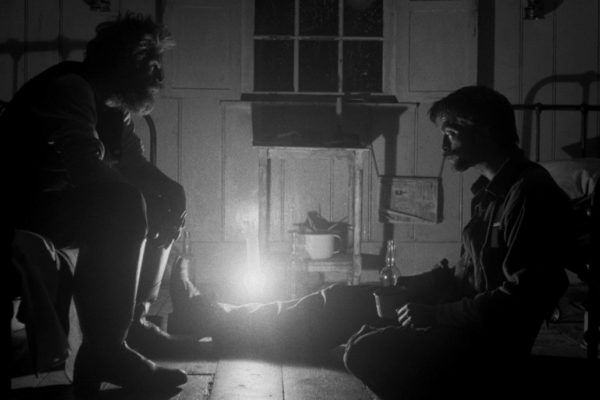 Look, I think this year’s been shit – I’m sure that’ll surprise nobody. It’s sucked. Still, in terms of horror films, I’d say it’s been brilliant. Superb scares, big belly laughs and some of the dastardliest deaths I’ve seen in ages. Every year I do a top ten, but this time around I’ve gone with 15 since there’s some I didn’t want to lose. Heck, I’d go as far as saying this has been the most robust lineup since I started writing for this site. As such, it’s a testament all the movies in this list that they made it at all. Some really good, really different flicks, including five feature debuts, and some big hitters across the pond haven’t even made it here yet: Antebellum, Freaky, The Lodge and Hunter Hunter. As such, 2021 is already looking promising. Note this list is dedicated solely to films with strong genre elements, or movies that are celebrations of horror (hence the multiple documentaries). However, I should highlight that one of my favourite things I reviewed for this site all year, Parasite, isn’t included.
Look, I think this year’s been shit – I’m sure that’ll surprise nobody. It’s sucked. Still, in terms of horror films, I’d say it’s been brilliant. Superb scares, big belly laughs and some of the dastardliest deaths I’ve seen in ages. Every year I do a top ten, but this time around I’ve gone with 15 since there’s some I didn’t want to lose. Heck, I’d go as far as saying this has been the most robust lineup since I started writing for this site. As such, it’s a testament all the movies in this list that they made it at all. Some really good, really different flicks, including five feature debuts, and some big hitters across the pond haven’t even made it here yet: Antebellum, Freaky, The Lodge and Hunter Hunter. As such, 2021 is already looking promising. Note this list is dedicated solely to films with strong genre elements, or movies that are celebrations of horror (hence the multiple documentaries). However, I should highlight that one of my favourite things I reviewed for this site all year, Parasite, isn’t included.
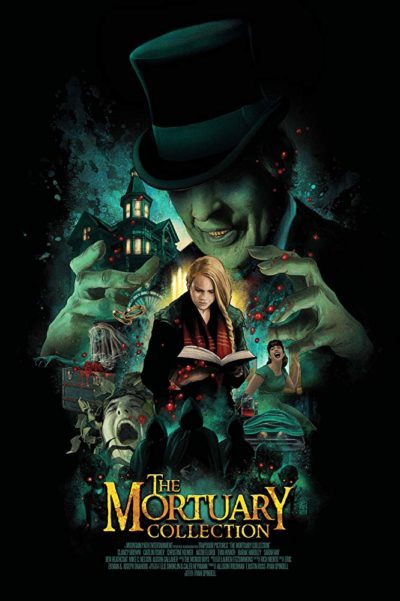
15. The Mortuary Collection: An anthology flick that’s all killer, no filler. These EC comics-inspired tales, plus their wrap-around, are a gift to horror fans. There’s a range of tricky topics, including campus rape-culture and euthanasia, though the focus stays on the fun. Very gory, very funny and squirm-inducing in the best way. There are all held together by Clancy Brown, who clearly has fun playing mortician Montgomery Dark as he curates the tales to us and Sam, a teenager looking for work with him. Director Ryan Spindell marks himself as one to watch. The Mortuary Collection has been a big hit on Shudder – and rightfully so. Here’s hoping he gets offered Creepshow. And many other things.
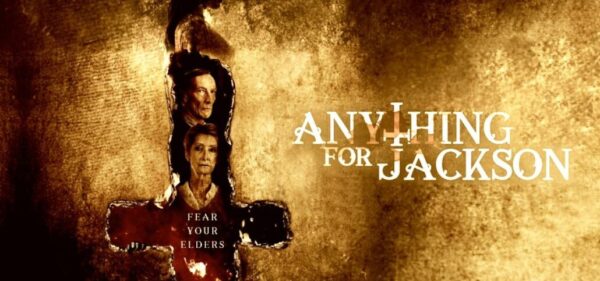
14. Anything for Jackson: Horror has handled grief a lot in recent years. Be it The Babadook, Midsommar or The Other Side of the Door. Then there are classics such as Don’t Look Now, The Changeling and Pet Sematary. Now here’s another to add to the list – an intimate horror-comedy about two grandparents missing their grandson, who tragically died in a car accident. To bring him back, they abduct a pregnant woman and use an ancient spellbook to put their dead grandson’s spirit into her unborn child – a bad idea, which goes even worse than you’d think. The small cast and director Justin G. Dyck find the story’s depth, doing something that delivers on both horror and human drama. However, the stand out for me is screenwriter Keith Cooper who gives them such rich, emotionally involved material. Powerful, darkly funny and intense.

13. Hosts: Normally, I don’t like to tweet while watching films. But during the premiere of Hosts, there was a moment I had to write ‘#Hosts well that bit was dark…’ No further explanation. Afterwards, I saw several people had concurred, and the filmmakers had gleefully shared it. Make no mistakes – this is not a horror that pulls its punches. Not to be confused with the one that takes place on Zoom – Hosts is a festive flick, albeit not one you’d want to see with all your family. It’s a creepy and innovative slice of sci-fi horror – and the only film this year to make me genuinely gasp with a moment of violence that’s made worse because you can see it coming. It’s a movie of two halves, with the first being a character-driven family drama, that explores relatable tensions well, and the second a series of scary set-pieces. Both parts are similarly accomplished, with Adam Leader and Richard Oakes showing a mastery of escalation and character development. As with how a Christmas dinner brings together a range of disparate ingredients and works because of how well they accompany each other, this film is a festive feast for genre fans. The directorial duo knows the genre inside out, offering us a slab of shlock, with sides of alien invasion, possession and home invasion, all slathered with thick suspense. I really look forward to this one getting a release, and so should you.
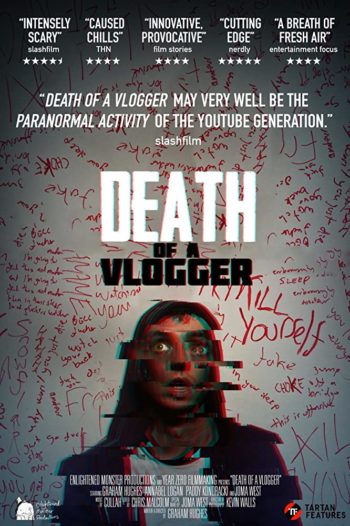
12. Death of a Vlogger: The first of two fantastic found footages, this one is a microbudget horror-comedy from good old Glasgow. Writer/ director and leading man Graham Hughes has crafted a smart, witty and occasionally unnerving horror about a vlogger trying to prove his house is haunted. This isn’t anything new on paper, though the film’s brilliance is in how it plays with audience expectations. What’s at the bottom of it all: malevolence, mental illness or money? In taking the time to debunk itself, Death of a Vlogger makes us ask if there’s a ghost messing with Graham, or if Graham is messing with us. If all this sounds like a load of meta wank, don’t worry – Death of a Vlogger doesn’t take itself too seriously, and the gags are laugh out loud funny. Hughes can also stage a good scare scene without the need for abrupt changes in tone or breaking character. Much of this comes from him taking the time to make us genuinely care about his flawed protagonists and therefore fear for them. He also transcends the usual found footage trappings with skilful editing and escalation that get around the obvious budgetary constraints. There’s inspiring use of technology too, including an unconventional séance scene and, on a related point, a well-observed satire of the cruel world of online discourse. It adds up to an exciting send-up of found footage that mutually celebrates and mocks hackneyed claims of “authenticity”. Plus, by focusing on the addictive, allure of online fame, it answers the typical question of why the bloody camera’s still on.
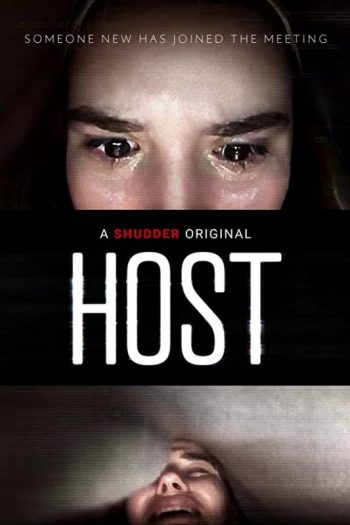
11. Host: The second of two fantastic found footages. This will be a lot of people’s number one, and deservedly so. Of all the films from 2020, this is the one that most sums up the year we’ve had: a state of the nation horror, about six friends who want to fight a clear and present malaise, then pay a tragically high price. Shot over Zoom, with director Rob Savage doing his work from the sofa, this is the sort of film that must have had a making-of as interesting as it is. Yet it’d do Host a disservice to suggest it works despite the circumstances. Regardless of when it got made, this is a real achievement built around an ingenious little concept: an online séance that backfires in real-time. The first two acts are a masterclass in developing the situation and giving us time to know the characters. Savage and his crew throw all they have at the screen in the frantic third and give us some of the most creative/ visually impressive set-pieces of 2020. It’s a brilliant movie that will hopefully act as a calling card for all involved.

10. Possessor: A brilliant little sci-fi thriller from Brandon Cronenberg, with an ace concept. Tasya Vos is an assassin who can temporary takeover the bodies of people close to their targets and take them out in very nasty ways through futuristic brain-implant tech. The perfect crime. Only there’s a high personal cost for her, and as she loses herself in her latest avatar’s identity, they start to fight back. It’s a stylish thriller, with a stunning aesthetic and some excellent ideas. The most impressive thing was how the script explores personality as a fluid construct – dependent upon people’s memory systems. There’s also a sharp satire of data-mining and privacy that runs through all layers of the film. From Vos taking over her subjects to her target trying to do the same through advertising and how her boss is trying to reduce what little empathy she has left. A fresh, disturbing and unpredictable ride.
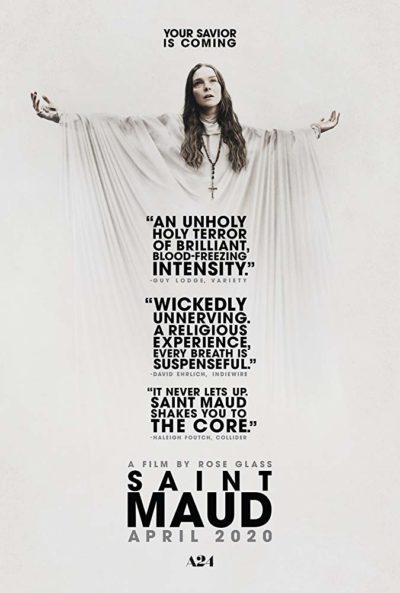
9. Saint Maud: A neat little horror, distributed by genre legends A24, which had the misfortune of coming out when cinemas were empty. Saint Maud is a stellar debut outing for Rose Glass that immediately establishes her as an exciting new voice. Focusing on the pious Maud, who has to face personal and literal demons alike, it’s a stripped-back, character-heavy horror that plays with the conventions of possession flicks to tell a tale of trauma and self-forgiveness. Many of my favourite horror films have leads that leave viewers emotionally conflicted. Maud is a complex creation, combining self-righteousness and religious sanctimoniousness with a heart-breaking vulnerability. Her exchanges with the world-wearier Amanda, who is on death’s doorstep, are a fascinating exploration of the film’s themes, and a great bit of character drama in their own right. There are, of course, some scary scenes too with a handful of deeply unsettling moments. In particular, the ending will stick with you long after the credits have rolled.
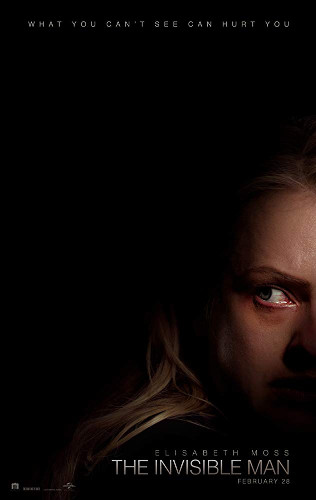
8. The Invisible Man: A very timely update of the old classic by Leigh Whannel: a man who is fast becoming one of the most exciting directors around. The Invisible Man is the single creepiest flick on this list, boasting scene after scene of sheer terror and some of the most accomplished escalation I’ve seen all year. Elisabeth Moss puts her all into it – playing Cecilia, who is pursued by a threat other people can’t see: her abusive ex-partner who appears to have faked his death somehow or has come back from the dead. It’s a #MeToo era horror that perfectly integrates its themes of “invisible” threats and action quotient without lapsing into moralising treatises. Throughout, Whannel gets so much through the power of suggestion: the scariest things are those which we can’t see. Stillness is his best friend, and there are so many moments I found myself scanning the screen to see if anything was moving. Great tension, chilling gas-lighting and a thrilling denouement. As per Upgrade, Whannel shows he can execute set-pieces flawlessly, and some moments had me on the edge of my seat. Make sure that you see it.
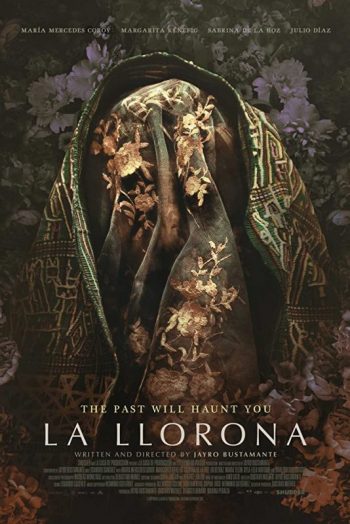
7. La Llorona: Yet another film from Shudder, marking their transition from a decent service into a world-class platform. La Llorona is a new take on the Latin American myth. It’s also a mediation on guilt and reckoning. General Enrique Monteverde is a former Guatemalan ruler, known worldwide as one of the bloodiest dictators of all time. Now in his twilight years, he and his complicit family are haunted by his victims’ ghosts. There’s a brilliant story of decline here – the once towering figure of Monteverde is now a weathered character, suffering from dementia and being kept up by the neverending chants of the protestors outside his house. The relationships are fascinating, particularly the general’s relatives coming to terms with his sins and their parts in them. The scares sequences are also exemplary, being subtle, scary and loaded with symbolism. The themes and the story come together flawlessly in an angry, and timely horror about something real. It makes for harrowing, moving and urgent viewing.
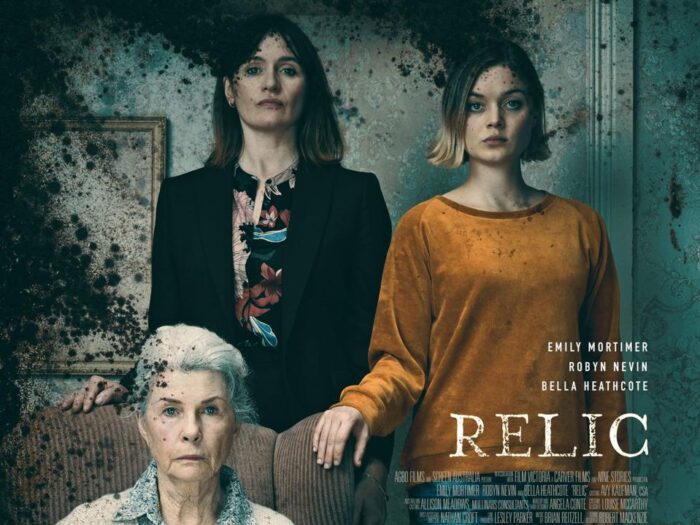
6. Relic: By now, horror fans will be used to domestic chillers that draw parallels between evil forces and mental illnesses. Recent examples include The Babadook or Hereditary. In the case of Relic, the demon is dementia. When family matriarch Edna goes missing, her daughter and granddaughter return home to find her. Days later, she shows up again with no explanation for where she’s been. However, a haunting presence hangs over her home. A lot of it stands up as a melancholy drama about the ageing process. At its core, Relic is about three generations of women negotiating their complicated relationships with each other against Edna’s memory loss. It’s about commitments, freedom and the hope that those who live long enough will be looked after by very people they nursed through infancy. As well as being a skilled dramatist, writer/ director Natalie Erika James doesn’t skimp on the scares either. And Edna’s cognitive decline is met by the house decaying around them. It builds up to a gruesome, but very touching finale I haven’t stopped thinking about since I saw it.
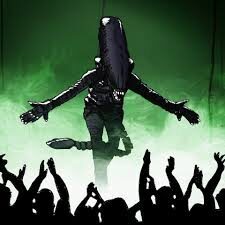
5. Alien on Stage: The first of two documentaries. Alien on Stage is this year’s One Cut of the Dead and is about precisely what it sounds like: an am-dram theatre company, consisting of Dorest Bus Drivers looking to perform Ridley Scott’s sci-fi classic. It’s not a match for the real thing, boasting wobbly backdrops, iffy special effects, and slightly wooden acting. Yet with the apparent passion on display, the jaunty soundtrack and quick edits there’s something undeniably euphoric about witnessing it come together. Importantly, even if the play was unintentionally funny (which the actors play to by the end), we’re never encouraged to laugh at anyone involved – always with them. They are such a charming troupe, who don’t do this because they want to win Tonys, but for the sheer fun of it. In the climactic highlight reel a delighted audience hoot, holler and rejoice over every second. It’s a glorious atmosphere – the cast and crew may have felt written off before, but the standing ovation they receive is the most heartfelt moment of I’ve seen all year. When the script-writer casually says one of his other ideas was Kill Bill, I don’t think I’ve ever wanted to see a sequel so much.
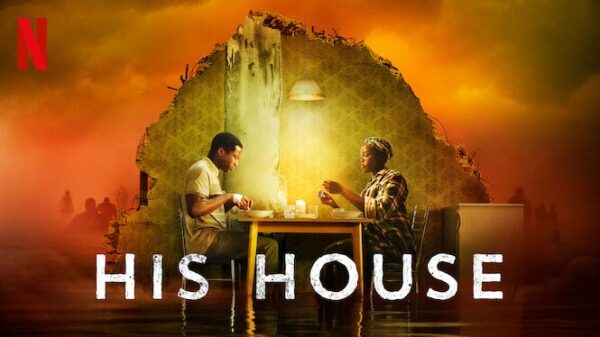
4. His House: As per my number three, this is a Netflix original – something which shows the streaming giant doesn’t only do Hallmark-style flicks. Horror is often at its best when it focuses on communities we rarely hear from – in this case, refugees from Sudan who have gone to live in the UK. What follows is a state of the nation flick and the closest we have to a British take on The Babadook, with the film working on a literal and metaphorical level. His House is a claustrophobic take on ghost stories that uses its spectre to comment on guilt and trauma. The scary scenes are exemplary though what stuck with me is the backing story, which gradually gets teased out. Most horrors build to a crescendo, though His House goes from big scares into something quieter and more moving. Moreso than any other entry here, His House goes to some dark places with a devastating development in the third act. Director Remi Weekes has done a feature-debut that makes some bold decisions, pushes audience identification and tells the kind of story you definitely won’t have ever seen before. Memorable iconography, empathetic performances and a growing sense of dread make this among the year’s most accomplished horrors. It’s hard to believe this is a feature-debut, and I can’t wait to see what Weekes does next.

3. I’m Thinking of Ending Things: The strangest film on this list, and the non-documentary that most stretches the definition of horror. I’m Thinking of Ending Things is a very welcome return for Charlie Kaufman. Though the first half, in which a young woman goes to meet her boyfriend’s parents. During it, her name changes, as do her job and how they met until it seems like what we’re seeing are many relationships playing themselves out – a possibility anchored by her changing clothes between shots, and his parents getting older and younger between appearances. This house is where the usual rules of time and etiquette don’t apply, and pictures can change depending on who is looking at them. But if all this seems strange, wait ’til you see what happens when they leave and go into the blizzard. The pieces slot into place like Tetris pieces across all three acts, building up to a movie that’s haunting but strangely life-affirming. Special mention to Jessie Buckley and Jesse Plemons’ layered performances, which ground the film in emotional reality no matter how off the wall it gets. On that point, where Kaufman excels is in doing surrealism without losing sight of the things he cares about: redemption, autonomy and idealism. These are themes which run through this piece, making for an experience that’s as rewarding as it is mesmerising.
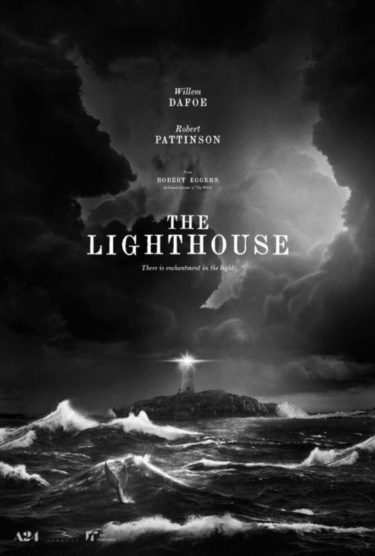
2. The Lighthouse: Robert Eggers does it again. After showing what he could do with The Witch, he turns his attention to a similarly claustrophobic setting – in this case, a lighthouse – and its occupants. William Defoe and Pattinson are excellent, playing their relationship as both a conflict and an unconventional love story. The latter delivers a career-best performance, playing Winslow with a physical and emotional intensity that makes his days as a sparkly vampire look like a fever dream. His unravelling is painful to watch. In comparison, we get the impression that Defoe is already halfway there, as he goes effortlessly between misanthropic despair and spouting Miltonesque monologues. At some point this year, I reckon our collective cabin fever means all of us must have felt like either man, if not both – possibly at the same time. The Eggers brothers are obviously sticklers for historical accuracy in terms of the language used and supposedly based their script on old diaries. There’s such a beautiful mix of poetry and profanity to how they talk. The direction is also the most impressive I’ve seen all year. The sense of dread builds up when we first hear the eponymous structure, and Eggers creates a real pressure-cooker atmosphere. As the clouds and waves surround the island, mimicking their raging tempers and tensions makes for an immersive viewing experience. You don’t just watch this – you feel it. The cinematic achievement of the year.

1. Clapboard Jungle: The Lighthouse may be the best-made film of 2020, though this is my personal favourite. It’s the one I was most affected by, and the one that’s stuck with me the most. In 2018, Justin McConnell released the film Lifechanger. This documentary charts the ordeal he underwent to get it made and distributed. From the brutal circuit scene, where films get sold, to the difficulties of distribution, it’s a candid piece that at once celebrates and decries the industry that brings us all together – one of the hardest to make it in. A star-studded lineup, including George Romero, Guillermo del Toro, Paul Schrader, Mick Garris, Tom Holland and Lloyd Kaufman do guest appearances. However, the real star is McConnell – who takes every one of life’s punches in the chin and carries on regardless. To his credit, he in no way sets out to make himself look like The Man. He’s honest, and repeatedly leaves in footage of himself making mistakes or having setbacks. Not that it ever gets too grim since the presentation is lively, and the voiceover’s sardonic. Still, it’s sad seeing McConnell wrap his own Blu-rays, and endlessly hitting the road after so many knockbacks. In that respect, the fact this movie even exists is an inspiration, and the growth we see in him as both a filmmaker and a person is rewarding. As we leave his confined office to see him premiere it the world over, his is an uplifting journey. It may seem daunting, but there’s excellent advice for people looking to get started. He also made me question how I conduct myself as a critic, reminding me always to be constructive rather than cruel. Things can and will get one star (see below), but we should never forget all the names in the credits. Here’s hoping McConnell has an easier time getting this one out there.

Honourable mentions:
Swallow: A complex, unconventional body-politics horror.
Gretel and Hansel: A dark, dreamy fairytale film by Oz Perkins.
After Midnight: Atmospheric, well written and really rewarding.
Dark Place: An impressive anthology of Aboriginal horror films.
The Swerve: A female-fronted Joker that build to a powerful bloody finale
The Owners: A creative twist on the home-invasion sub-genre, boasting an ace cast.
Tailgate: A claustrophobic, white-knuckle thrill ride through Holland. A modern Duel.
The Vast of Night: A slow-burning, atmospheric sci-fi horror that looks out of this world.
VFW: Joe Begos does a bloody a retro exploitation movie with gunplay, gore and good fun.
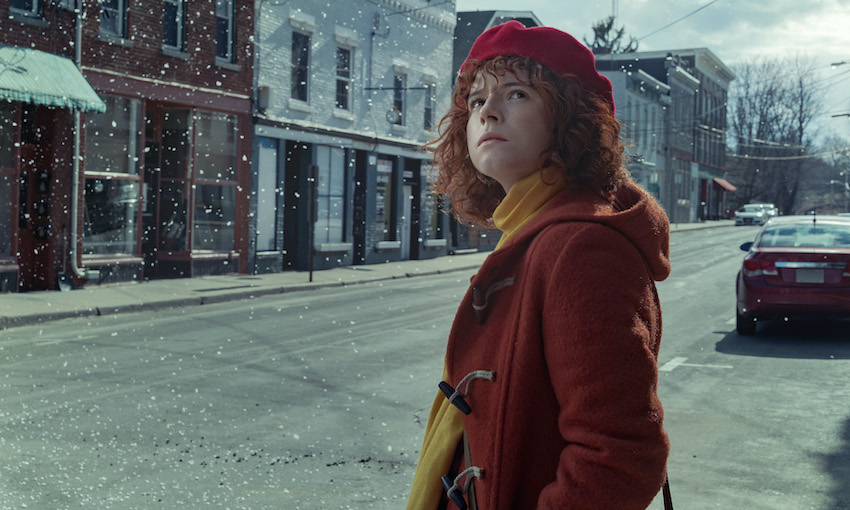
Best performance:
Jessie Buckley: I’m Thinking of Ending Things.
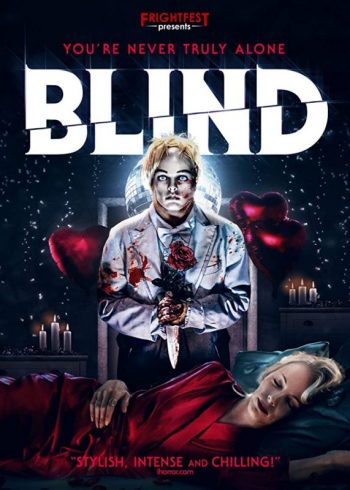
Guilty Pleasures:
Anderson Falls: The Room of detective films.
Butt Boy: A puerile concept played out like a hardboiled noir film.
Blind: The most extra flick of the year – a cinematic equivalent of cheesecake. And I loved it.
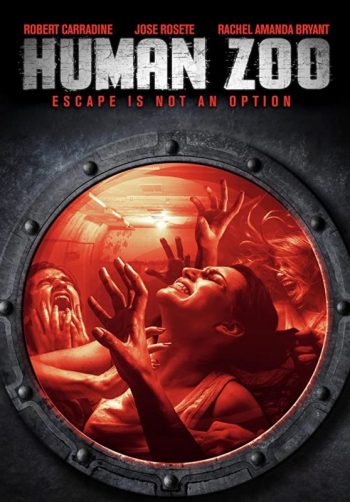
Worst of the year:
Human Zoo: Pointless, gratuitous and repetitive – this may be the worst film I have ever seen.
Films I didn’t see but wanted to:
Sputnik
Scare Me
Extra Ordinary
Benny Loves You
The Dark and the Wicked


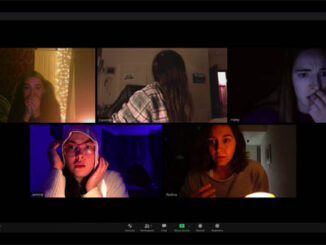
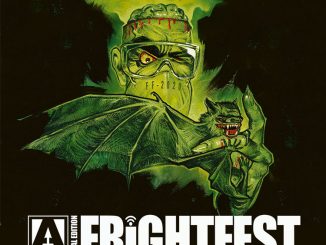
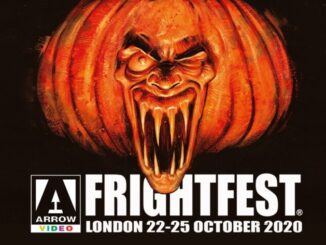
Fantastic list – really helpful/informative. Would be great if you’d add where the titles are viewable…Happy New Year x